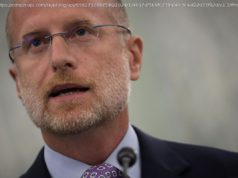Researchers have uncovered a network of tens of thousands of fake Twitter accounts created to support former President Donald Trump and attack his critics and potential rivals.
Someone has created thousands of fake, automated Twitter accounts — perhaps hundreds of thousands of them — to offer a stream of praise for Donald Trump over the past 11 months, an Israeli tech firm has discovered.
Besides posting adoring words about the former president, the fake accounts ridiculed Trump’s critics from both parties and attacked Nikki Haley, the former South Carolina governor and U.N. ambassador who is challenging her onetime boss for the 2024 Republican presidential nomination.
Florida Gov. Ron DeSantis, the bots aggressively suggested, couldn’t beat Trump, but would be a great running mate.
As Republican voters size up their candidates for 2024, whoever created the bot network is seeking to influence them, using online manipulation techniques pioneered by the Kremlin to sway the digital platform conversation about candidates while exploiting Twitter’s algorithms to maximize their reach.
The sprawling bot network was uncovered by researchers at Cyabra, an Israeli firm that shared its findings with The Associated Press. While the identify of those behind the network of fake accounts is unknown, Cyabra’s analysts determined that it was likely created within the U.S.
«One account will say, ‘Biden is trying to take our guns; Trump was the best,’ and another will say, ‘Jan. 6 was a lie and Trump was innocent,'» said Jules Gross, the Cyabra engineer who first discovered the network. «Those voices are not people. For the sake of democracy I want people to know this is happening.»
Bots, as they are commonly called, are fake, automated accounts that became notoriously well-known after Russia employed them in an effort to . While big tech companies have improved their detection of fake accounts, the network identified by Cyabra shows they remain a potent force in shaping online political discussion.
The new pro-Trump network is actually three different networks of Twitter accounts, all created in huge batches in April, October and November 2022. In all, researchers believe hundreds of thousands of accounts could be involved.






